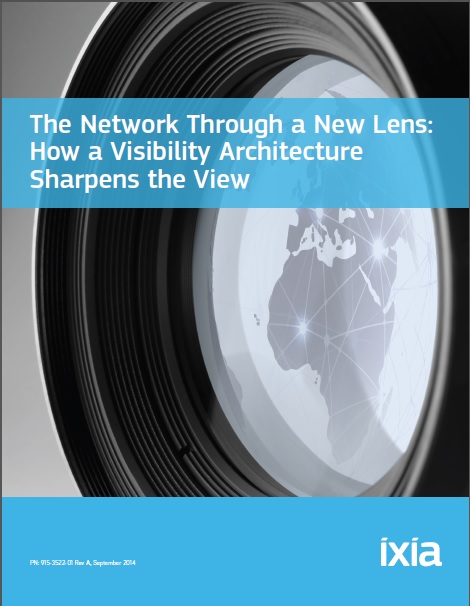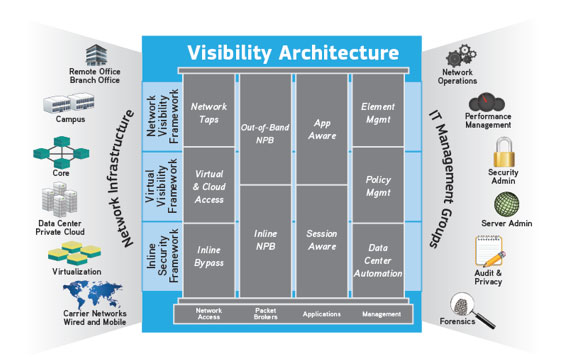“Enter the Visibility Architecture”
“Buying more tools to deal with spiraling demands is counter-productive – it’s like trying to simplify a problem by increasing complexity. Visibility merits its own architecture, capable of addressing packet access and packet stream management. A visibility architecture that collects, manages, and distributes packet streams for monitoring and analysis is ideal for cost-savings, reliability, and resilience. The economic advantages of such end to-end visibility are beyond debate.
An architectural approach to visibility allows IT to respond to the immediate and long-range demands of growth, management, access, control, and cost issues. This architecture can optimize the performance and value of tools already in place, without incurring major capital and operational costs. With the ability to see into applications, a team can drill down instantly from high-level metrics to granular details, pinpoint root causes and take action at the first—or even before the first – sign of trouble – lowering Mean Time to Repair (MTTR) dramatically.
A scalable visibility architecture provides resilience and control without adding complexity. Because lack of access is a major factor in creating blind spots, a visibility architecture provides ample access for monitoring and security tools: network taps offer reliable access points, while NPBs contribute the advanced filtering, aggregation, deduplication, and other functions that make sure these tools see only traffic of interest.
Application- and session-aware capabilities contribute higher intelligence and analytical capabilities to the architecture, while policy and element management capabilities help automate processes and integrate with existing management systems. Packet-based monitoring and analysis offers the best view into the activity, health, and performance of the infrastructure. Managing a visibility architecture requires an intuitive visual/ graphical interface that is easy to use and provides prompt feedback on operations – otherwise, architecture can become just another complexity to deal with.”
The Ixia Network Visibility Architecture encompasses network and virtual taps, as well as inline bypass switches; inline and out-of-band NPBs; application-aware and session aware monitoring, and a management layer.
Download the ebook here

Thanks to Network World for the article.






